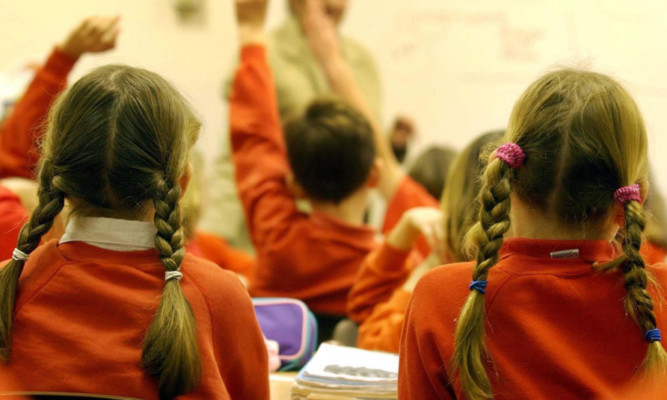Education councillors have offered a “could do better” assessment of the way Angus schools are scrutinised.
The performance of schools across the country is monitored by her Majesty’s Inspectorate of Education (HMIE). Its officers carry out regular visits and publish reports, both highlighting good practice and flagging up areas for attention.
As part of the Scottish Schools Act, councils are also required to review the quality of education they provide and Angus has been doing that through Supported School Reviews (SSRs).
Questions have been raised, however, over the different interpretations of school performance after a councillor said she was concerned the reviews did not square up.
Former Alliance education vice-convener Margaret Thomson made her comments after education committee members were asked to note positive SSRs for both Montrose Academy and Webster’s High in Kirriemuir at their latest meeting.
Committee convener Sheena Welsh said the SSR reviews were a “valuable exercise which helped schools identify their strengths and areas for improvement and deliver higher levels of attainment.”
However, Mrs Thomson said she had doubts over the effectiveness of the two-pronged approach after reading different outcomes for Carnoustie High.
“I wonder at the value of the supported review process. Looking at the one we did in March and then the inspection report in April, they didn’t match up,” she said.
“We either missed points or HMIE have a totally different agenda and maybe we should be looking at marrying these up. Only a small part of what we said in the supported schools review came up in the inspection as areas for improvement.
“If we are looking at the whole process, maybe we should be looking more at targeting it to give a more accurate picture.
“I’m not necessarily saying that HMIE is right, but we are giving the wrong impression in the supported school review compared to what was found there by the inspectors,” Mrs Thomson added.
Montrose member David May defended the SSR programme, saying: “I think what the authority has done is very impressive, but maybe we need to look at it by bringing in link inspectors and looking at areas such as attainment and supporting best practice across all our schools.”
Church representative Bill Simpson encouraged councillors to take the positives from the dual approach.
“I’ve never seen any long-term improvement that comes from negativity. It’s always based on what people are doing well,” he said.
“Telling people ‘this is what you’re not doing’ is no use to anybody. When good practice is shared if we can look into that on a regular and consistent basis it would be worth an awful lot.”
Council strategic director (people) Margo Williamson praised the review teams for their “thorough and professional” approach to the exercises but agreed that there were a number of areas of overlap, not just between SSR and HMIE.
“Since these review exercises relate to reviews which are undertaken with school staff, the reports identify more, and more specific, areas for improvement than would normally be captured in a school inspection report by Her Majesty’s Inspectorate of Education.
“The areas for improvement include, therefore, concrete actions which school staff recognise need to be and can be carried out.
“Reports also identify for each school significant strengths upon which actions to take forward the agreed improvement actions can build.”
She added: “There is scope to look again at this and how we can move forward.”
